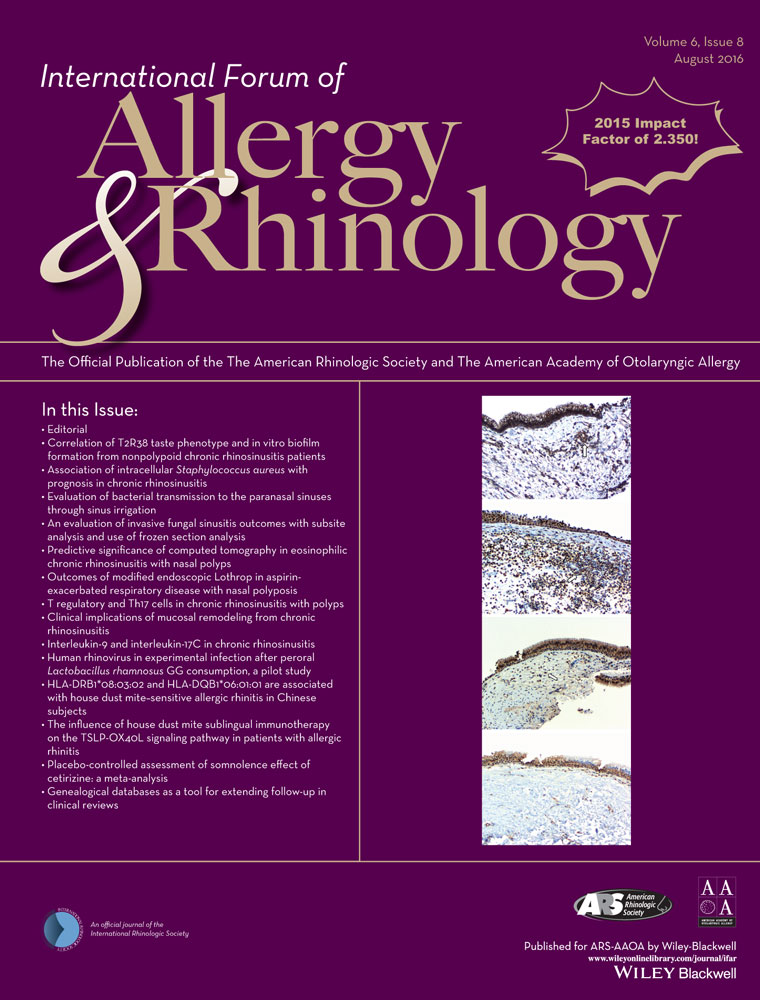Human rhinovirus in experimental infection after peroral Lactobacillus rhamnosus GG consumption, a pilot study
Funding sources for the study: Finnish State funding for university-level health research. The original clinical trial was funded by Valio Ltd and Finnish Funding Agency for Technology and Innovation (TEKES project number 3002/31/2008).
Potential conflict of interest: M.K. is an employee of Valio Ltd. The other authors declare no conflicts of interest.
Abstract
Background
Data has emerged on possible beneficial effects of probiotics in respiratory tract viral infections, but it is unclear if the promising positive effects evidenced are due to a reduced viral load during infections. The aims of this work were to investigate the effect of peroral probiotic Lactobacillus rhamnosus GG (American Type Culture Collection [ATCC], Accession No. 53103) consumption on human rhinovirus (HRV) load in nasopharyngeal lavage samples in experimental HRV infection, and to correlate viral load to clinical symptoms.
Methods
Intranasal HRV A39 inoculation was performed on 59 adults, who had consumed juice enriched with live or heat-inactivated L. rhamnosus GG or control juice for 3 weeks prior to inoculation in a randomized, controlled, pilot trial setting. Nasopharyngeal lavage samples and symptom data were analyzed on day 0 before inoculation, and on days 2 and 5. Samples were subjected to quantitative HRV detection by polymerase chain reaction (PCR).
Results
Before inoculation 9 of 59 (15%) samples presented with another HRV strain than the studied A39. There was a tendency toward the lowest HRV loads in the L. rhamnosus GG groups and the highest in placebo group (log10 copies/mL, 95% confidence interval [CI], 6.20 [5.18 to 7.40] in live, 6.30 [4.91 to 7.08] in inactivated L. rhamnosus GG, and 7.25 [5.81 to 7.52] in placebo group, p = 0.57 in day 2) in the wild-type excluded population. The HRV load positively correlated with the symptom scores on days 2 and 5 (correlation coefficient 0.61 [p < 0.001] and 0.28 [p = 0.034], respectively).
Conclusion
Results did not show statistical differences in viral loads in subjects using L. rhamnosus GG when compared to placebo. HRV load positively correlated with the total symptom scores.




